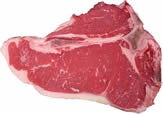
Along with the moral and ethical obligation to produce food products that are safe for consumers, food processors are very cognizant of the fact that they are one recall away from possibly going out of business. It’s happened before, it will likely happen again, and the smart executives know to install numerous forms of pathogen control in their process to ensure that it won’t happen to them.
The “hurdle technology” involves employing several interventions into a process. Any pathogen will have to clear each one of those hurdles in order to make it into the food supply, and each hurdle makes that risk increasingly unlikely.
“Every packing plant today, not only do they have one intervention, but they might have as many as seven or eight interventions,” explains Dr. Brad Morgan, professor in the Department of Animal Science at Oklahoma State University. “Hot water rinses, hide-on carcass washes — all these things are some form or fashion of an antimicrobial to try and reduce or eliminate the presence of a pathogen.”
Antimicrobial sprays and washes are an important part of that process, and chemicals such as lactic acid, citric acid and acetic acids help protect the public. Their use goes far beyond the industry’s packers. A portion-control specialist like Firstclass Foods in Hawthorne, Calif., uses several hurdles in its 95,000-square-foot, state-of-the-art processing plant. A lactic acid spray is part of the process, says Salomon Benzimra, president.
“We have gone through numerous debates of using irradiation versus lactic acid, and we feel safe to say that the minimal application of antimicrobial leaves a minimal residue behind, resulting in a safe product with longer shelf life,” he says. The use of lactic acid spray systems doesn’t degrade the quality of the protein being sprayed, either.
A facility may need more than one type of intervention, particularly if it has multiple processes. Dennis Smithyman, president of Advanced Food Technologies, a chemical distribution company, explains that a company that makes steaks and uses the trim for ground beef should have an intervention at both operations.
“You can run into a recall problem if that trim goes off and is eventually found to have been contaminated and recalled,” he says. “That’s going to come all the way back and affect your steak business as well, unless you have separate interventions in each of those [areas].”
When it comes to the type of anti-microbial treatment used by a processor, Smithyman says that it depends on the process — the type of protein, the type of cut, the type of pathogen, whether the product will be labeled organic or not.
“All these factors come into effect to try and find out what’s best for the end user,” he says.”
Typically, the nature of the antimicrobial interventions is not an issue, as long as it is safe and is approved by the USDA, but it has led to export problems. The poultry industry has traditionally used a chlorine rinse on chicken carcasses to eliminate pathogens, but that process is not permitted in the European Union. That difference has led to an EU ban on chlorine-treated chicken since 1997. Chicken exports to Russia were halted earlier this year when that country adopted a similar policy.
The new requirements from Russia permitted the use of cetylpyridinium chloride, peroxyacetic acid or hydrogen peroxide for a rinse instead of chlorinated water, and several top poultry processors have since converted facilities to the new rinses. Pilgrim’s Pride, for example, was given approval to ship product to Russia from its plants in Boaz and Russellville, Ala., Athens, Ga., and Dallas, Texas, once those plants began using the approved antimicrobials.
“Russia is an important export market for U.S. chicken, and the re-opening of the borders will be a significant benefit to our company and industry,” said Pilgrim’s president/CEO Don Jackson when approval was given.
The type of antimicrobial may vary depending on the species and operation, but the addition of an extra hurdle benefits not only processors but their end users as well.
“Consumers want to be guaranteed that they are eating a safe product, and enforcement of regulations is not enough,” Benzimra states. “As a responsible meat company we must do our part to reduce or eliminate any pathogens.”

Research project takes on blade tenderization
With the Food Safety and Inspection Service taking a closer look at the dangers of mechanically tenderized or non-intact meat, a study at Oklahoma State University is looking at ways to prevent contamination of the same.The study was organized by Ross Industries, manufacturers of tenderizing equipment. The company has built a spray cabinet that’s designed to be compatible with its tenderizers currently in the marketplace, and it gathered approximately 10 chemical suppliers to fund the OSU study.
“Blade tenderizing is something that’s always been done,” explains Dr. Brad Morgan, professor in the Department of Animal Science at OSU, “and we would like to continue using it, because it’s one of the easiest, most convenient ways to improve palatability.” The FSIS’ fear, though, is that a pathogen on the meat’s surface would get pushed into the center of the meat during tenderization, survive the cooking process and lead to a case of food poisoning.
In Phase One of the study, Morgan and the other researchers cored out a sample of top sirloin, cut the cores into wafers and inoculated them with the E. coli O157:H7 pathogen. The wafers then went through the spray cabinet, using different chemicals, and were tested several times for pathogens, up to 14 days later. Of the 13 chemicals used in the process, seven showed the most promise in eliminating bacteria from the meat and moved on to the next phase.
In Phase Two, which is expected to be completed by the end of the year, the top sirloins will be inoculated and run through the spray booth and tenderizer. The researchers will core out the meat to see if there is contamination beneath the surface, and if so, how deep.
OSU and Ross went to the FSIS prior to starting the study to have the procedures approved.
“Hopefully that will make it seamless as far as adapting it in the industry,” Morgan says.
Firstclass Foods, which is using one of these stand-alone antimicrobial intervention spray cabinets, has reported a reduction in bacterial loads since its installation.
“Management has experienced higher productivity with the use of this intervention, and employees have embraced the efficiency of the additional intervention,” says Benzimra.



